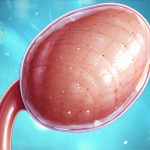Antihistamines are commonly associated with allergic reactions – itchy eyes, runny noses, hives – but their potential role extends far beyond these typical applications. Increasingly, research is exploring the use of certain antihistamines in managing non-bacterial cystitis, a condition characterized by chronic bladder symptoms without an active bacterial infection. This often debilitating condition, sometimes referred to as interstitial cystitis or painful bladder syndrome, can significantly impact quality of life, leading to frequent urination, urgency, and pelvic pain. Traditional treatments have often fallen short for many sufferers, prompting exploration into alternative therapies like antihistamines, particularly those with specific properties beyond simple histamine blocking. Understanding the connection between mast cells, inflammation, and bladder dysfunction is crucial in appreciating why these drugs may offer some relief.
The underlying mechanisms are complex, but a growing body of evidence suggests that mast cell activation plays a significant role in non-bacterial cystitis. Mast cells, immune cells found throughout the body including the bladder wall, release various mediators like histamine when activated. In susceptible individuals, these mast cells can become overly sensitive and trigger an inflammatory cascade even without a typical infection or allergen. This chronic inflammation damages the bladder lining, leading to the characteristic symptoms of non-bacterial cystitis. Antihistamines, therefore, aren’t necessarily treating an allergy; instead, they’re attempting to modulate this immune response by blocking histamine receptors and potentially reducing mast cell activation. It is important to note that this isn’t a universally effective treatment, and individual responses can vary considerably – further investigation and careful medical guidance are vital.
The Science Behind Antihistamines and Bladder Function
The rationale for using antihistamines in non-bacterial cystitis stems from the recognition of a complex interplay between the immune system, inflammation, and bladder function. While histamine is well-known for its role in allergic reactions, it’s also involved in pain signaling and inflammation within the bladder itself. Specifically, H1 receptors – one of several types of histamine receptors – are found on sensory nerves in the bladder wall. Activation of these receptors can contribute to the perception of pain and urgency. Antihistamines that effectively block H1 receptors may therefore help reduce bladder-related discomfort. However, it’s not always about blocking histamine alone; some newer antihistamine research focuses on compounds with mast cell stabilizing properties, which go beyond simply blocking histamine release and aim to prevent mast cells from degranulating (releasing inflammatory mediators) in the first place.
Furthermore, the bladder lining – known as the urothelium – can become compromised in non-bacterial cystitis, making it more permeable and allowing irritants to penetrate deeper. This increased permeability triggers further inflammation and exacerbates symptoms. Antihistamines may indirectly help by reducing overall inflammation and potentially strengthening the protective barrier function of the bladder lining. The specific antihistamines used for this purpose are often H1 receptor antagonists with a longer duration of action, such as hydroxyzine or fexofenadine, though research is ongoing to determine which agents offer the most benefit. It’s crucial to understand that these aren’t a cure; they aim to manage symptoms and improve quality of life. Understanding flow testing can also help diagnose underlying issues.
The choice of antihistamine isn’t arbitrary. First-generation antihistamines (like diphenhydramine) can cross the blood-brain barrier more easily, leading to drowsiness and other side effects. Second-generation antihistamines (like cetirizine or loratadine) are generally preferred due to their reduced sedative effects, making them more suitable for long-term use. However, even within second-generation options, varying degrees of mast cell stabilizing properties exist, influencing their potential effectiveness in non-bacterial cystitis.
Practical Considerations and Limitations
While the idea of using antihistamines for non-bacterial cystitis is promising, several practical considerations and limitations need to be acknowledged. First, it’s essential to have a confirmed diagnosis of non-bacterial cystitis after ruling out other potential causes of bladder symptoms, such as urinary tract infections or bladder cancer. This requires thorough medical evaluation by a qualified healthcare professional. Second, antihistamines are not a first-line treatment for this condition; they’re typically considered an adjunct therapy alongside other interventions like dietary modifications, pelvic floor physical therapy, and pain management strategies.
The effectiveness of antihistamines in non-bacterial cystitis can vary significantly from person to person. Some individuals experience substantial symptom relief, while others may see little or no improvement. This variability highlights the importance of a personalized approach to treatment. A healthcare provider will typically start with a trial period of an antihistamine, carefully monitoring for both benefits and side effects. If the medication is well-tolerated but ineffective, alternative options might be explored. It’s also important to remember that antihistamines address symptoms, they don’t tackle the underlying cause of non-bacterial cystitis, which remains poorly understood in many cases. Biopsy can help with diagnosis and understanding the severity.
Understanding Mast Cell Activation Syndrome (MCAS) and its Connection
Many patients experiencing chronic bladder issues may have an underlying – often undiagnosed – condition called Mast Cell Activation Syndrome (MCAS). MCAS is characterized by excessive mast cell activation leading to a wide range of symptoms affecting multiple organ systems, including the urinary tract. If MCAS is suspected, it’s crucial to investigate further with specific diagnostic testing and potentially broader management strategies tailored for MCAS itself, rather than just focusing on bladder-specific treatments. These might include dietary adjustments to reduce mast cell triggers, medications to stabilize mast cells (beyond simple antihistamines), and lifestyle modifications to minimize stress.
The Role of Different Antihistamine Types
As mentioned earlier, not all antihistamines are created equal. While H1 receptor antagonists are the primary focus in treating bladder symptoms, there’s growing interest in exploring the potential benefits of drugs that target other histamine receptors or have mast cell stabilizing properties. For example, some research suggests that combining an H1 antihistamine with an H4 receptor antagonist may provide synergistic effects by addressing different aspects of the inflammatory response. Similarly, medications like cromolyn sodium – traditionally used for asthma – are being investigated for their ability to stabilize mast cells and reduce bladder inflammation in non-bacterial cystitis patients. Kegels can also assist with strengthening pelvic floor muscles, which support bladder function.
Future Directions in Research and Treatment
The field of non-bacterial cystitis is continually evolving, with ongoing research aimed at unraveling the underlying mechanisms and identifying more effective treatments. Studies are exploring novel therapies targeting different aspects of the immune system and inflammatory pathways involved in bladder dysfunction. This includes investigations into biologics (medications derived from living organisms) that specifically target certain immune cells or inflammatory mediators. Further research is also needed to identify biomarkers – measurable indicators – that can help predict which patients will respond best to antihistamines or other treatments, leading to a more personalized and targeted approach to care. Ultimately, a deeper understanding of the complex interplay between the immune system, inflammation, and bladder function will pave the way for improved therapies and better outcomes for individuals living with this challenging condition. Diuretics may be useful in managing related kidney issues.





















